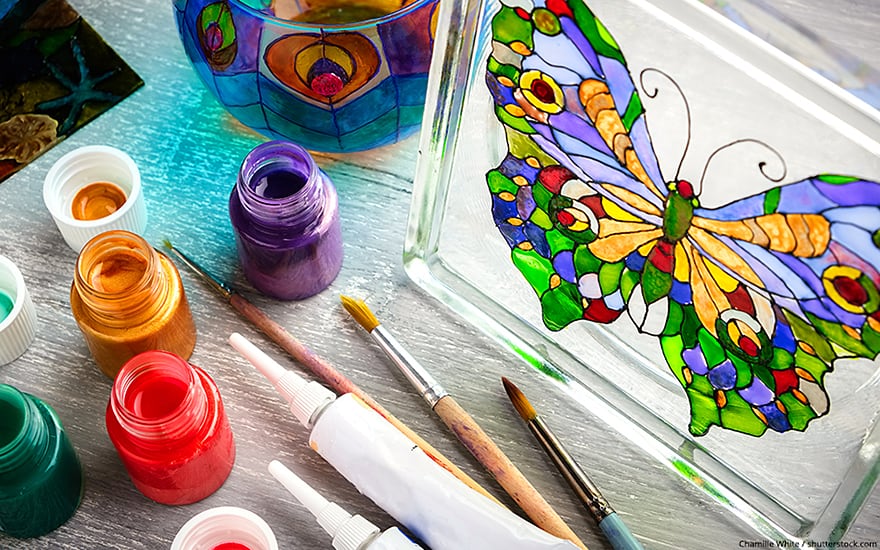How To Keep Acrylic Paint On Glass
Acrylic paint is a versatile medium that can be used on various surfaces, including glass. Painting on glass can be a fun and creative way to add a personal touch to your home decor or create unique gifts for your loved ones. However, one of the common challenges that people face when painting on glass is how to make the paint stick and last for a long time. In this article, we will explore different techniques and tips on how to keep acrylic paint on glass, ensuring your creations will last for years to come.
Whether you are a beginner or an experienced artist, learning how to keep acrylic paint on glass is essential. There are various reasons why you may want to paint on glass. It could be to decorate a vase or create a stained-glass effect on a window. Whatever your motivation is, you want the paint to adhere to the glass surface and remain intact over time. By following the techniques outlined in this article, you can achieve this and create beautiful, long-lasting works of art on glass surfaces. So, let’s dive in and explore how to keep acrylic paint on glass.
Get the Fail-Safe Paint Color Playbook (Free PDF)
36 proven colors • 8 ready palettes • trim & sheen guide • printable testing cards.

Understanding the Challenges of Painting on Glass
Before diving into specific techniques, it’s important to understand why acrylic paint can be difficult to adhere to glass surfaces. Glass is a non-porous material, meaning that it has a smooth surface with no pores or gaps for paint to seep into. This can make it difficult for paint to stick to the surface, especially if the glass is smooth and clean.
Another challenge is that acrylic paint tends to dry hard and inflexible, which can cause it to crack or peel when applied to a flexible surface like glass. To avoid these issues, it’s important to take the right steps to prepare your glass surface before applying the paint.
Techniques for Keeping Acrylic Paint on Glass
Surface Preparation
One of the most important steps in keeping acrylic paint on glass is preparing the surface properly. This involves thoroughly cleaning the glass and using a primer or surface conditioner to create a surface that the paint can adhere to.
Cleaning the Glass
To clean the glass, start by washing it with warm soapy water and a soft cloth or sponge. Be sure to rinse the glass thoroughly with clean water and allow it to dry completely before proceeding.
Priming the Surface
Next, apply a primer or surface conditioner to the glass surface. This will create a surface that the paint can adhere to more easily. There are several products that can be used for this purpose, including:
- Gesso
- Acrylic Medium
- Multi-Surface Primer
- Etching Cream
Follow the manufacturer’s instructions for applying the product, and be sure to allow it to dry completely before applying the paint.
Choosing the Right Paint
In addition to properly preparing the glass surface, it’s important to choose the right type of paint. When working with glass, it’s best to use a paint that is specifically designed for this purpose, such as:
Get the Fail-Safe Paint Color Playbook (Free PDF)
36 proven colors • 8 ready palettes • trim & sheen guide • printable testing cards.
- Glass Paint
- Enamel Paint
- Acrylic Enamel Paint
These types of paint are formulated to adhere to non-porous surfaces like glass, and they dry to a hard, durable finish that can withstand wear and tear.
Applying the Paint
When applying the paint to the glass surface, there are a few things to keep in mind:
- Use a light touch: Apply the paint in thin layers, using a light touch. Avoid applying too much pressure, as this can cause the paint to slide or smear.
- Allow time to dry: Be patient and allow each layer of paint to dry completely before applying additional layers.
- Apply multiple coats: Depending on the type of paint you’re using, you may need to apply multiple coats to achieve the desired opacity and coverage.
Sealing the Paint
Once the paint has dried completely, it’s important to seal it to protect it from wear and tear. There are several products that can be used for this purpose, including:
- Acrylic Sealer
- Clear Varnish
- Polyurethane
Follow the manufacturer’s instructions for applying the product, and be sure to allow it to dry completely before handling the painted glass.
Conclusion
With the right techniques and products, it’s possible to keep acrylic paint looking great on glass surfaces. By properly preparing the surface, choosing the right paint, and following the right application and sealing techniques, you can create beautiful and long-lasting painted glass creations.
